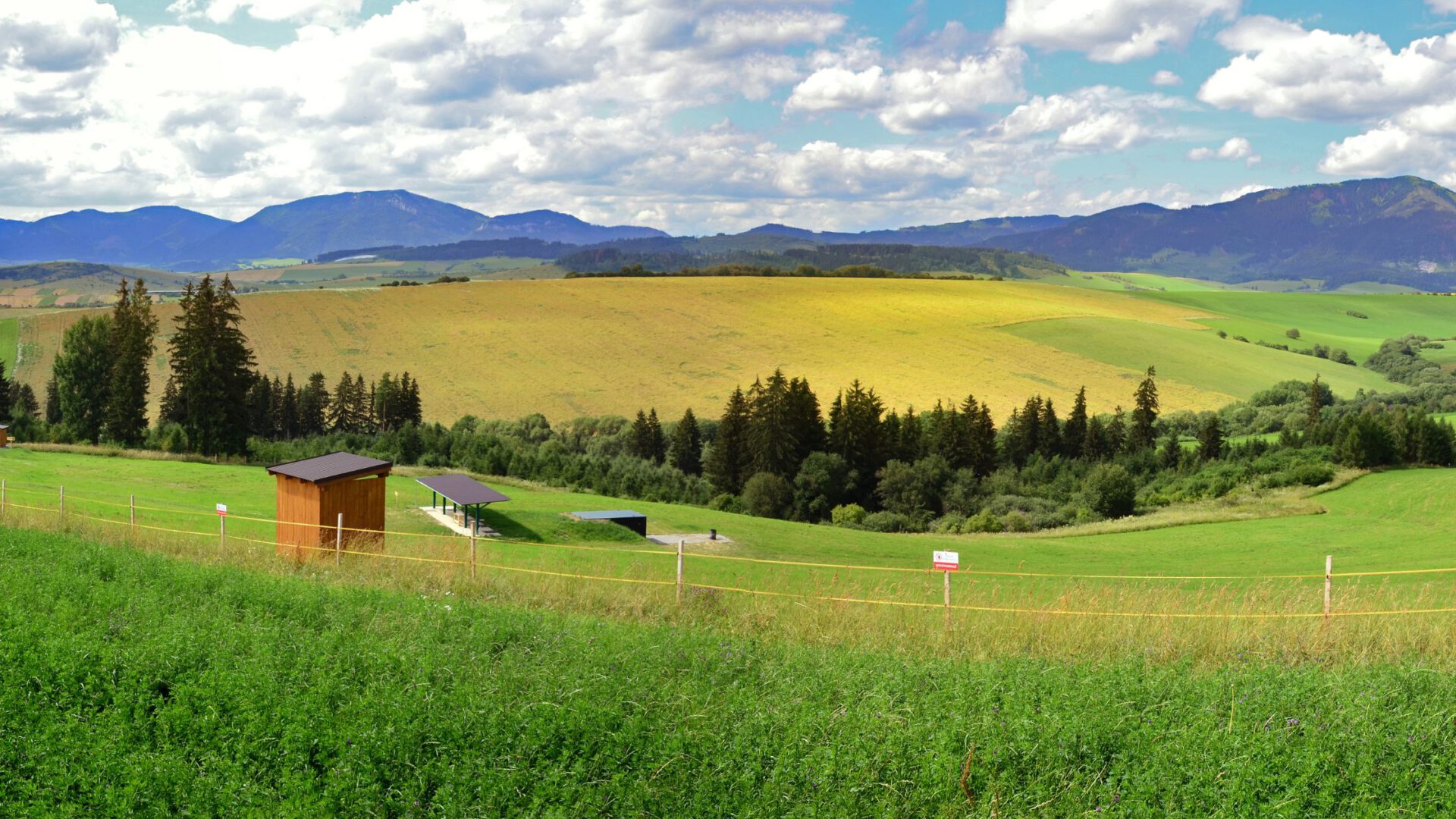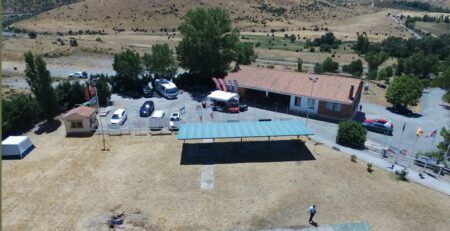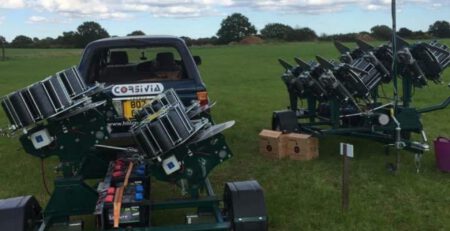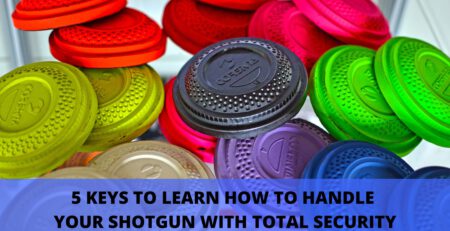STEPS AND REGULATIONS FOR BUILDLING A CLAY TARGET SHOOTING RANGE
Like we’ve mentioned once or twice before on social media, if you’ve decided to build your own clay target shooting range, you’re probably more than aware of all the rules and regulations you’ll need to follow to get your range up and running at full capacity.
To make things as easy for you as possible, in this article we would like to shed some light on all the work you have ahead of you.
Ready to get down to work?
THINGS TO CONSIDER BEFORE BUILDING YOUR SHOOTING RANGE
As you might have already guessed, first and foremost are the regulations for regulated facilities, both those from the ISSF (International Shooting Sport Federation) and the RFEDTO (Royal Spanish Olympic Shooting Federation), as well as those set by the Ministry of the Interior.
However, beyond these regulations, you should consider aspects such as project specifications, granting and validity of authorisations, application and documentation, location and layout of your shooting range and the type of sports facility you want to set up.
Let’s take a closer look at each.
REGULATIONS ON BUILDING A SHOOTING RANGE
There are two types of regulations that cover the building of shooting ranges.
On the one hand, there are the Spain-specific regulations and security measures set forth by the Ministry of the Interior, which are of a general nature and are approved in the Firearm Regulation by Royal Decree 137/1993, of 29 January.
On the other hand, at the national and international level, you’ll need to follow the Shooting Venue Planning Guidelines drawn up by the ISSF and the RFEDTO, which regulate the safety measures and general characteristics of the different types of facilities for shooting ranges, which ensures that this sport is practiced under the same conditions at all ranges throughout the world. To that end, complying with these regulations when developing a technical project of this magnitude is mandatory.
PROJECT SPECIFICATIONS
The project specifications are contained in a document that covers a description of the solutions adopted, such as the support systems, structure, enclosure, finishing systems, paving, installations and equipment.
This document must include the following specifications:
- The venue site and the land available for it.
- Size and technical characteristics of the building, pursuant to the Annex to the Regulations.
- Proposed safety measures for preventing accidents, pursuant to the Annex to the Regulations.
- Intended use and type of discipline.
- Soundproofing conditions, in the case of shooting galleries.
- The remaining requirements for each case in the Annex to the Rules.
Authorisation for shooting ranges will require a favourable report from the Directorate General for Armament and Material of the Ministry of Defence and from the corresponding body of the Ministry of Industry, Trade and Tourism.
In addition, the Directorate General of the Civil Guard will notify the Ministry of Defence of the authorisations granted.
ISSUE AND VALIDITY OF AUTHORISATIONS
Authorisations for building a shooting range will be issued notwithstanding other licences or authorisations of a compulsory nature which, according to their authority, may be granted by the Autonomous or Local Administrations in each country.
They will be valid for an indefinite period of time and will be personal and non-transferable. They will only expire and must be applied for again whenever the objective or subjective circumstances that determined their issue and validity have changed.
APPLICATION AND DOCUMENTATION FOR BUILDING A CLAY TARGET SHOOTING RANGE
In Spain, applications for authorisation for the construction of a clay target shooting range must be submitted to the Guardia Civil’s Weapons and Explosives Division that corresponds to where the facilities are located. For other countries, the corresponding federation will be able to give you the information you need.
Before applying, we recommend contacting the Guardia Civil’s Weapons and Explosives Division (or the corresponding authority) where you plan to build your range so that they can give you detailed and personalised information on the characteristics and safety measures required.
Along with the application, as mentioned above in the section on regulations, you’ll have to submit the following documentation:
- For companies, certificate of the installation agreement.
- For individuals, the certificate of criminal record of the applicant, or that of the representative if the applicant is on behalf of a company.
- Design and survey map, with the following specifications:
- The venue site and the land available for it.
- Size and technical characteristics of the building, pursuant to the Annex to the Regulations.
- Proposed safety measures for preventing accidents.
- Soundproofing conditions, in the case of shooting galleries.
- The remaining requirements for each case as set forth in the Annex to the Firearms Regulations.
Once all the documentation has been received, the competent authority will proceed to examine them; if they meet the regulatory requirements, the report presented will be approved for the works that the applicant wants to execute.
Should the authority detect any irregularities or missing information it will notify the applicant via an improvement or hearing process, so that corrections or additions can be made, and the authorisation can proceed.
Should the applicant fail to correct or submit the documents required to resolve the issue, the authority will decide to shelve or reject the application.
Once the approved works have been completed, the corresponding authority will make an inspection visit, checking whether the buildings are compliant with the approved design and the applicable safety measures, which shall be stated in the corresponding report.
If the report is favourable, authorisation for the facility will be issued.
THE BEST LOCATION FOR A CLAY TARGET SHOOTING RANGE
As mentioned at the beginning of this article, according to the Annex to the Firearms Regulations, shooting ranges may only be set up on land that is not only suitable for these uses, but also outside the town centre.
In terms of safety, the current regulations of the Firearms Regulations specify several points to bear in mind with regard to the location of your shooting range:
- The safety area must be clear of all buildings and roads through which people, animals or vehicles may pass and which cannot be closed to traffic during shooting.
- For skeet shooting or hunting trails, the safety area must be calculated based on the various shooters’ positions and the possible shooting angles.
- If the land within the safety area is not owned by the clay target shooting society, written consent must be obtained from the owners of the land inside the safety area, authorising the dropping of pigeons, targets and shot during the shoots.
- The safety area must not be crossed by any overhead, electric or telephone lines that the pigeons, targets or shot may fall onto.
- In terms of weather, the shooting range would ideally be built in a place where both rain and wind are not extremely strong, since most of the facilities are outdoors and any inclement weather would directly affect the activities of the shooting range.
THE BEST LAYOUT FOR YOUR SHOOTING RANGE
One of the best layouts a shooting range can have is facing west: the sun is behind the range, mainly in the mornings, which is when shooters usually train and when competitions are held.
Newly constructed outdoor ranges should be set up so that the sun is behind the athlete for as long as possible during the competition, taking special care to ensure that there are no shadows on the targets.
TYPE OF FACILITY TO BUILD
The type of facility will depend on whether you want to build a shooting range for Olympic or sporting events. Today we’re going to focus on the facilities for an Olympic shooting range.
The size of the shooting range will depend on the number of shooting stations you want to have. Moreover, the size of the enclosure where you’ll build your shooting range will depend on the number of services you want to offer, which can include:
- Areas where athletes can relax, change clothes, etc.
- Changing areas near the final galleries and the qualifying galleries.
- Meeting rooms for use by ISSF officials, committees and juries.
- Spaces for offices, ranking, results compilation and storage of results and required materials.
- A main board for posting official results and announcements, and small boards in each gallery for posting preliminary results. A notice board should also be placed in the athletes’ rest area.
- Secure weapons storage area.
- A weapons and equipment control area with changing rooms.
- An armoury with suitable workbenches.
- Free facilities for firearms and equipment manufacturers to service their products.
- Space for commercial displays at an additional charge.
- A restaurant or food and beverage service facilities.
- Adequate restrooms.
- Wireless internet and email.
- A space for winners’ ceremonies.
- Facilities for media, radio and television representatives.
- Appropriate medical facilities and anti-doping control facilities with toilets.
- Parking.
New clay target shooting ranges should be built with a reasonable, obstruction-free shot drop area where mechanisms can be recovered, and lead shot recycled.
SHOOTING RANGE MAINTENANCE AND UPKEEP
The maintenance and upkeep of a clay pigeon shooting range isn’t voluntary, but rather an obligation that needs to be duly reflected in a maintenance plan that covers the specific characteristics of each material or piece of equipment, and the specific characteristics of the sports facility where they are located (building, weather, management model, etc.).
This maintenance plan must go through two particularly important phases:
- Preparing the plan.
- Implementing the plan.
It is important to remember that, in both phases, the collaboration and opinion of all the stakeholders involved (operators, managers, directors, technicians, etc.) is essential if you want a holistic view of the problems you’ll need to solve.
When preparing the plan, include all the components of the facility and their characteristics.
Once all components have been identified, establish the maintenance operations of each material, equipment or facility, with their description and maintenance tasks, frequency and the material and human resources required for that maintenance.
The maintenance tasks that will need to be included in the Maintenance Plan should cover every facet of the task, which are:
- Preventive maintenance: these are the types of tasks that focus on preventing any damage or loss to the integrity of the material, equipment or facility over time. This also includes technical and legal maintenance (conducted in accordance with mandatory regulations), and cleaning (an especially crucial step, since it affects aspects as crucial as health and safety, material conservation, and the aesthetics of the facility, which is one of the aspects most valued by users).
- Corrective maintenance: these are the types of tasks that focus on repairing or replacing damaged material, equipment or facilities. The material and human resources and products available need to be identified, adjusting them to the demands established in the maintenance operations. Staff must be trained so that they are familiar with the components they need to upkeep, the overall facility, as well as the maintenance procedures.
- Assess the costs that maintenance tasks are going to entail so that you can add them to the range’s general expenses, ensuring that they’re not an added expense that is susceptible to budget cuts.
A successful implementation of the maintenance plan should include the following:
- Sharing the maintenance plan with all the stakeholders involved (staff, collaborating companies, range director, managers, maintenance technicians, etc.) so that they know the plan and the details of the tasks to perform.
- Appointing people who will be responsible for performing the maintenance tasks as well as those who will monitor and manage maintenance to ensure compliance with the plan.
- Training of the staff in charge of handling maintenance tasks.
- Preparing monitoring sheets for regular tasks and the most common corrective maintenance work to make management of these tasks more effective; you can also use software to help manage these tasks.
If you’re able to follow these guidelines, you’ll be well on your way to the successful maintenance and upkeep of your shooting range, ensuring that the outstanding services you provide on day one continue well into the future.
The commissioner, shooting director or whoever oversees shooting ranges must regularly issue a written report to the board of directors on the status of the range’s facilities and any pending tasks that need to be completed to keep the facility running smoothly.
This written report must clearly and accurately state if the activity should be suspended at any of the facilities due to the lack of absolute safety guarantees. Shooting will not be allowed to continue if there is any uncertainty in this respect.
Now you have a deeper insight of everything it takes build your shooting range with all the guarantees you need to ensure its success.
Even so, if you think you need some help to get started, remember that our Coworking programmes can help make your dreams come true.
Please don’t hesitate to let us know if you have any questions.
In the meantime, remember that, if you don’t have it yet, you can download our Manual of Best Practices for Managing Shotting Clubs HERE.












